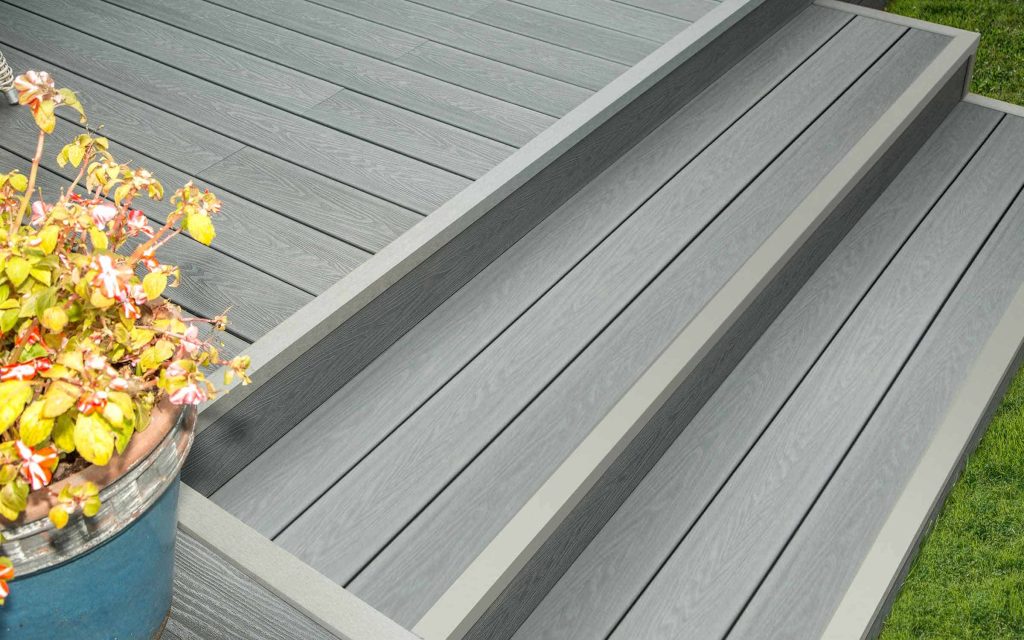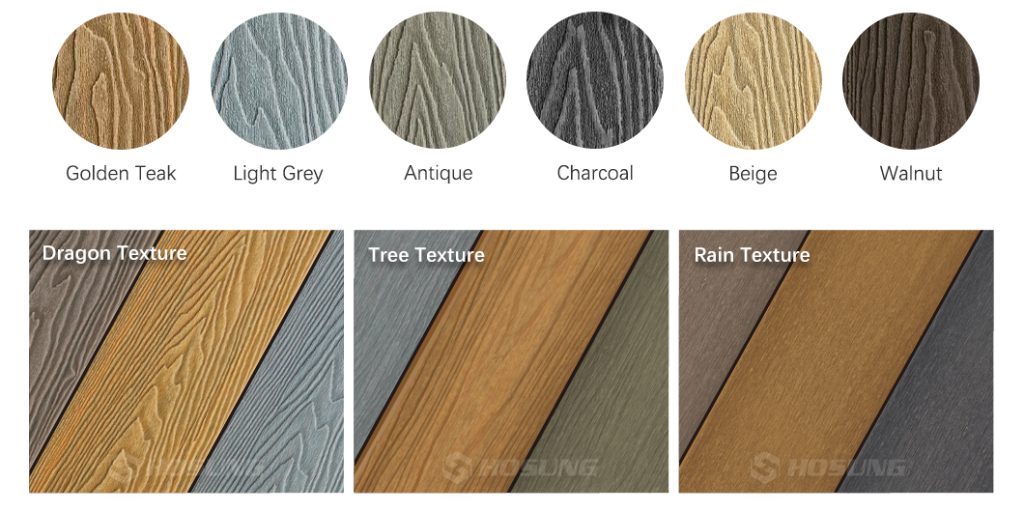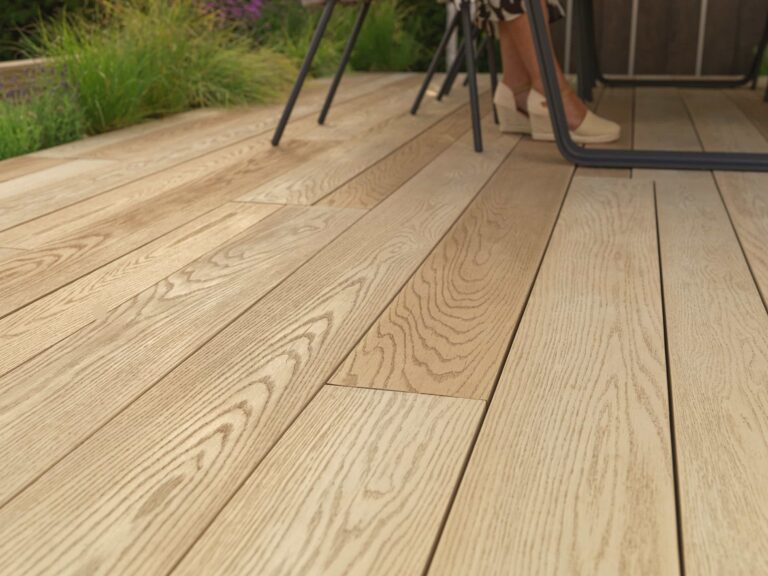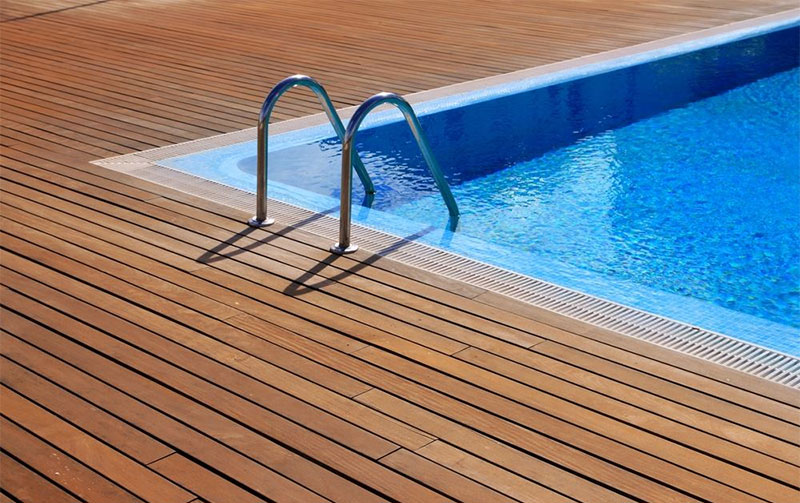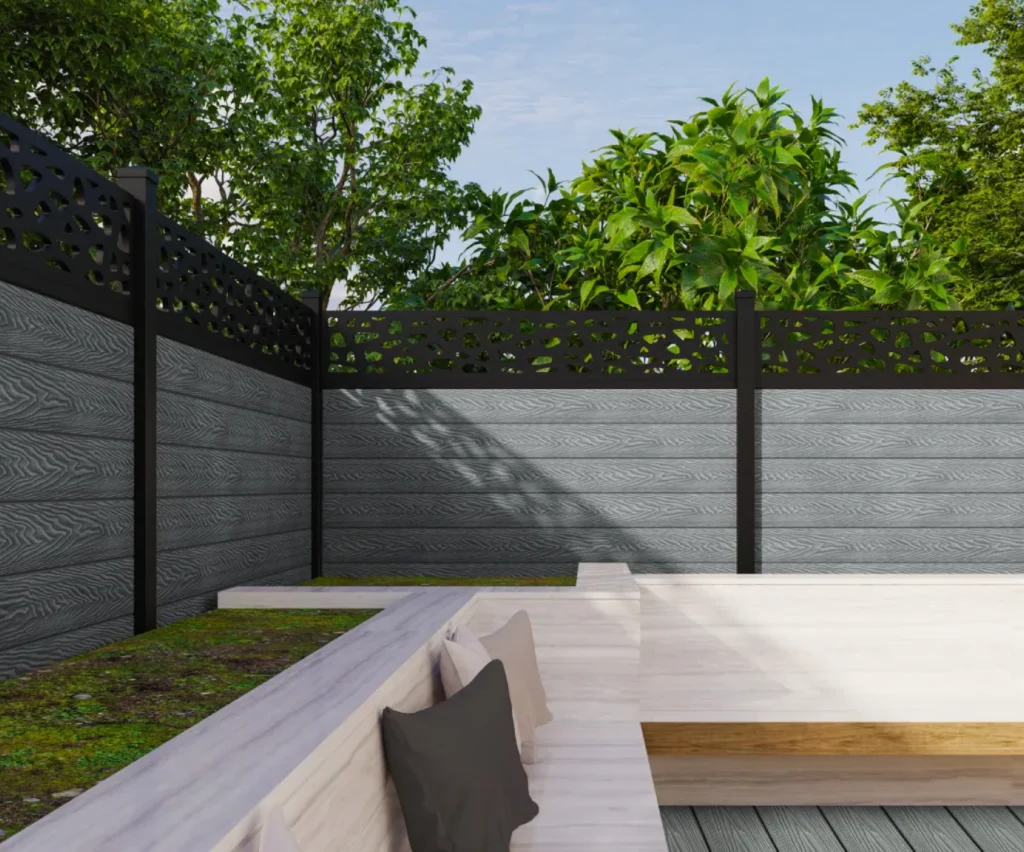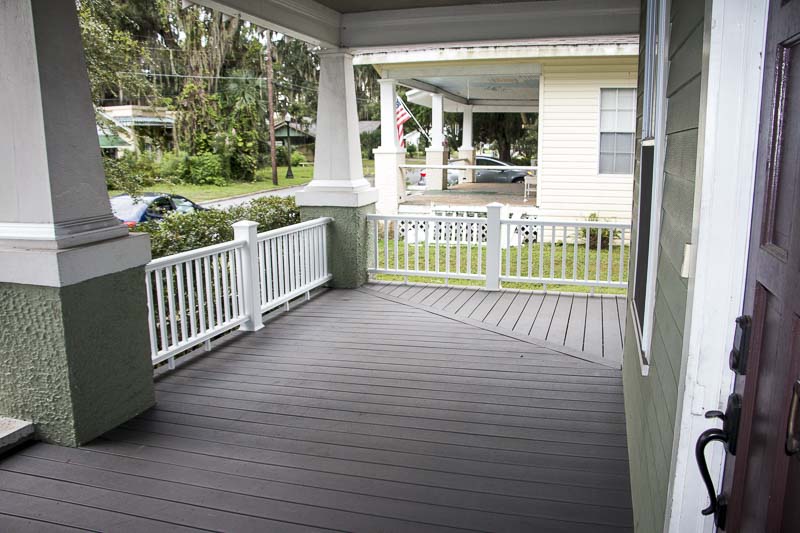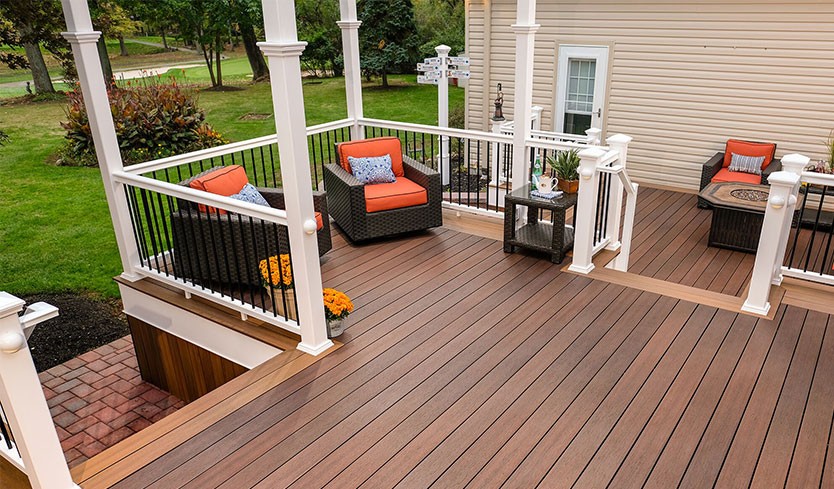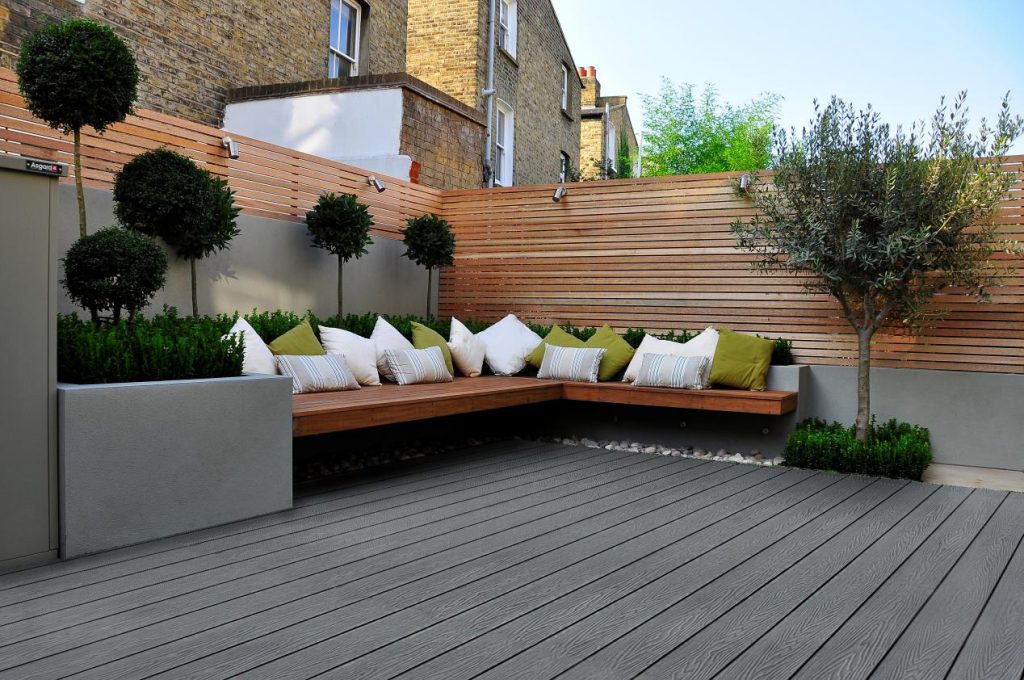Updating your entryway or patio steps can dramatically improve your home’s curb appeal and functionality. Installing composite decking over concrete steps is an increasingly popular renovation choice—offering a sleek, durable, low-maintenance finish that mimics real wood. In this comprehensive guide, we’ll walk you through everything from assessing feasibility to recommended installation strategies, and troubleshooting. We’ll also touch on how to put composite decking over concrete steps and how to install composite decking on concrete stairs for those looking for varied phrasing. By the end, you’ll confidently know how to transform your steps with composite decking.
Table of Contents
Why Choose Composite Decking Over Concrete Steps?
When considering installing composite decking over concrete steps, homeowners gain significant benefits.
✔️ Durable and Weather-Resistant
One of the main reasons homeowners choose composite decking is its material composition. Made from a mix of wood fibers and recycled plastic, composite boards are engineered to resist warping, splintering, and rotting—common issues with traditional wood. This makes them ideal for outdoor use, especially on high-traffic areas like steps.
✔️ Better Than Bare Concrete
Concrete may seem durable, but over time it stains easily, cracks in freeze-thaw cycles, and feels unwelcoming underfoot. In contrast, installing composite decking over concrete steps enhances both appearance and comfort, transforming dull, grey surfaces into warm, inviting stairways.
✔️ Low Maintenance
Unlike wood, composite decking doesn’t require seasonal staining, sanding, or sealing. For stairs—where dirt, leaves, and spills accumulate fast—this low-maintenance quality is a major benefit. Regular cleaning with soap and water is usually all that’s needed to keep steps looking fresh.
✔️ Improved Safety
Safety is another big advantage. Composite boards are typically textured for slip resistance and often designed with drainage grooves. When properly installed, they help prevent water buildup and reduce the risk of slipping in rainy or snowy conditions.
✔️ Functional and Aesthetic Upgrade
Overall, installing composite decking over concrete steps combines function and beauty—offering a stylish, safe, and easy-to-maintain solution that dramatically improves the look and usability of outdoor stairs.
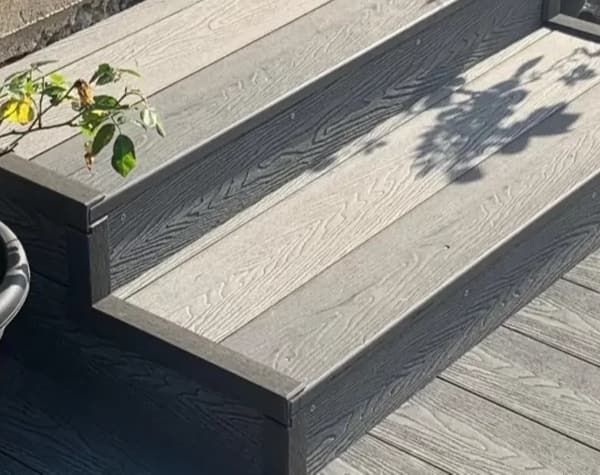
Planning and Preparation: What You Need to Know
Before installing composite decking over concrete steps, thorough preparation is essential to ensure a professional and long-lasting result. Here are the key steps to follow:
1. Assess the Condition of Your Concrete Steps
Ensure the concrete surface is structurally sound, free from loose or crumbling areas.
Minor cracks can be repaired with appropriate patching compounds like Bostik or Fill-N-Finish.
Major structural damage must be fixed before proceeding, as decking installation requires a stable base.
2. Take Accurate Measurements
Measure the rise (height) and run (depth) of each step carefully.
Composite decking boards typically come in widths of 5.5” to 7”. For wider treads, multiple boards may be needed.
Don’t forget to measure both the treads (horizontal part) and risers (vertical part).
Include a typical 1-inch overhang on the tread edge for aesthetics and to prevent water pooling.
3. Choose the Right Composite Decking Material
Select high-quality composite decking boards with full capping (4-sided) for enhanced moisture resistance.
For risers, look for boards or fascia profiles designed to fit vertical surfaces seamlessly.
If you are wondering how to put composite decking over concrete steps, selecting the right board profile is critical for a neat finish.
4. Gather Necessary Tools and Materials
Composite decking boards
Fasteners (either hidden-clip systems or face screws suitable for composite)
Construction adhesive
Patching compounds (Bostik or Fill-N-Finish) for repairing concrete
Power tools: angle grinder with diamond blade (for cutting), drill, level, and chalk line
Safety gear: goggles, gloves, dust mask — especially important when cutting boards
5. Prepare the Workspace
Clear debris and dirt from the concrete surface thoroughly.
Wash the steps and allow them to dry completely before installation.
While moisture barriers are generally not needed, in extremely humid or damp climates, use a moisture meter to check concrete dryness before starting.
Installing the Frame: Why It Matters
When installing composite decking over concrete steps, one common mistake is skipping the subframe. Although it might seem easier to attach decking boards directly to the concrete, building a proper frame is crucial for several reasons:
1. Stability and Support
A well-constructed frame provides a stable base for the decking boards, preventing warping or bending under foot traffic. It distributes weight evenly and secures the boards firmly, which is especially important on steps where safety is a priority.
2. Proper Drainage
The frame creates an air gap between the concrete and decking boards. This gap is essential for drainage, preventing water from pooling under the boards. Adequate drainage minimizes mold and mildew growth, protecting both the decking material and the underlying structure, thereby extending the lifespan of your stairs.
3. Accommodating Expansion and Contraction
Composite decking materials typically expand and contract about 1/8 inch per linear foot depending on temperature changes. Without a subframe, this movement could cause boards to pop off or crack. The frame allows the decking to flex safely without damage.
How to Build the Frame:
Use pressure-treated lumber (such as 2x4s or 2x3s) or composite furring strips to construct the frame step-by-step.
Start at the base of the steps and attach the framing strips to the concrete using masonry screws (e.g., Tapcon screws).
Space the strips 12 to 16 inches apart (on center), aligned evenly across the width of each step.
Incorporate ledgers and lateral blocking or cleats between strips for additional stability.
Use a level and square tools to ensure the frame is perfectly flat and aligned before proceeding.
Final Step:
After securing the frame, apply construction adhesive along the top of each strip before laying the decking boards. This extra bonding step enhances the stability and longevity of your deck installation.
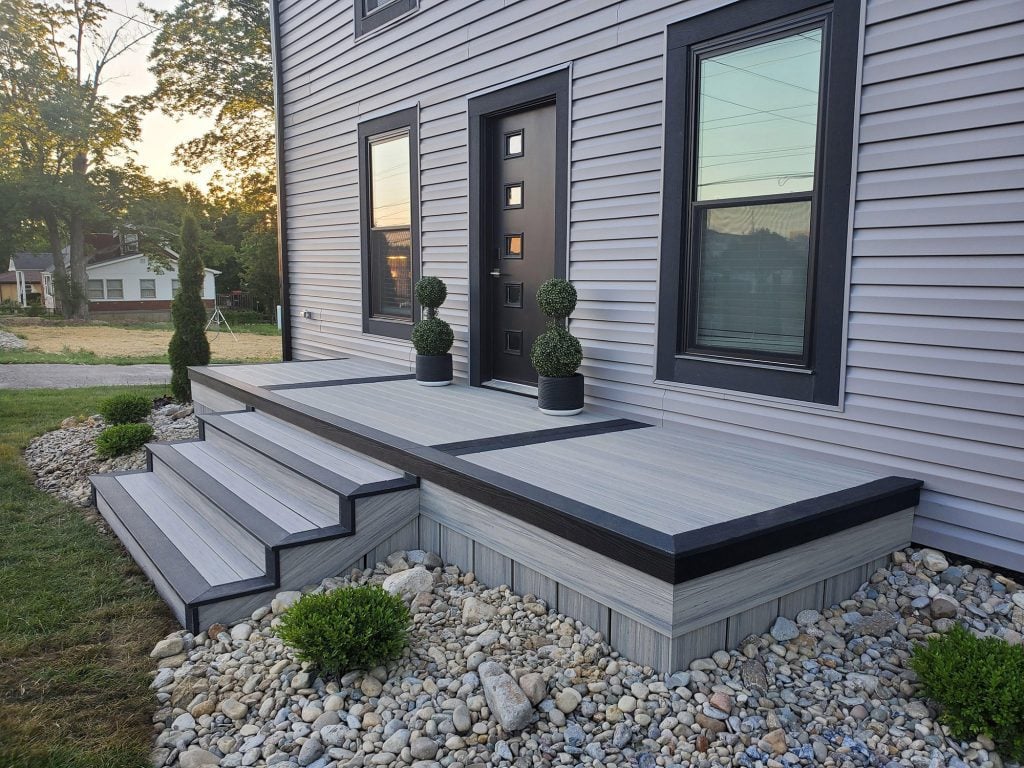
Cutting and Laying Deck Boards: Mastering the Process
Accurate measuring, cutting, and positioning are essential steps in installing composite decking over concrete steps. A neat, professional finish depends on precision and planning.
1. Dry-Fit Before You Cut
Begin by dry-fitting the composite boards on the subframe. This allows you to double-check layout, direction, and edge spacing before making permanent cuts.
Dry-fitting is especially important for steps with angled landings, curves, or non-standard shapes.
Early adjustments help avoid misaligned boards, gaps, or wasted materials later.
2. Mark and Cut Boards Precisely
Use a chalk line to mark straight and accurate cut lines across both riser and tread boards.
Score the surface first, then use a diamond-bladed circular saw to make clean cuts through the composite.
Always cut in a well-ventilated area and wear a dust mask or respirator—composite dust can be harmful when inhaled.
Keep children and pets away during cutting for safety.
3. Install from Bottom to Top
Start installation from the lowest step and work your way upward.
On each tread (the horizontal step surface), leave an expansion gap of 1/8″ between boards to allow for thermal movement.
Leave a 3/8″ gap between the tread and the riser (vertical surface) for flexibility.
Use hidden fasteners if available. Line up grooves and insert manufacturer-approved clips at intervals of 12″–16″ on each joist.
Secure riser boards with predrilled holes and composite-compatible screws or BRAD nails.
4. Maintain Alignment and Finishing Touches
Keep an overhang of about 1″ on each tread to cover the subframe and assist with water runoff.
Regularly use a level and straightedge to ensure proper alignment throughout the project.
For end grain protection, seal cut edges with the manufacturer’s end-cut solution or apply matching end caps to prevent moisture damage.
5. Aesthetic Pro Tip
One expert trick for how to install composite decking over concrete steps is staggering the boards across treads.
Instead of repeating the same board lengths, alternate starting lengths for a more dynamic appearance and minimized joint lines.
This technique not only adds visual interest but also improves the strength of the layout over wider treads.
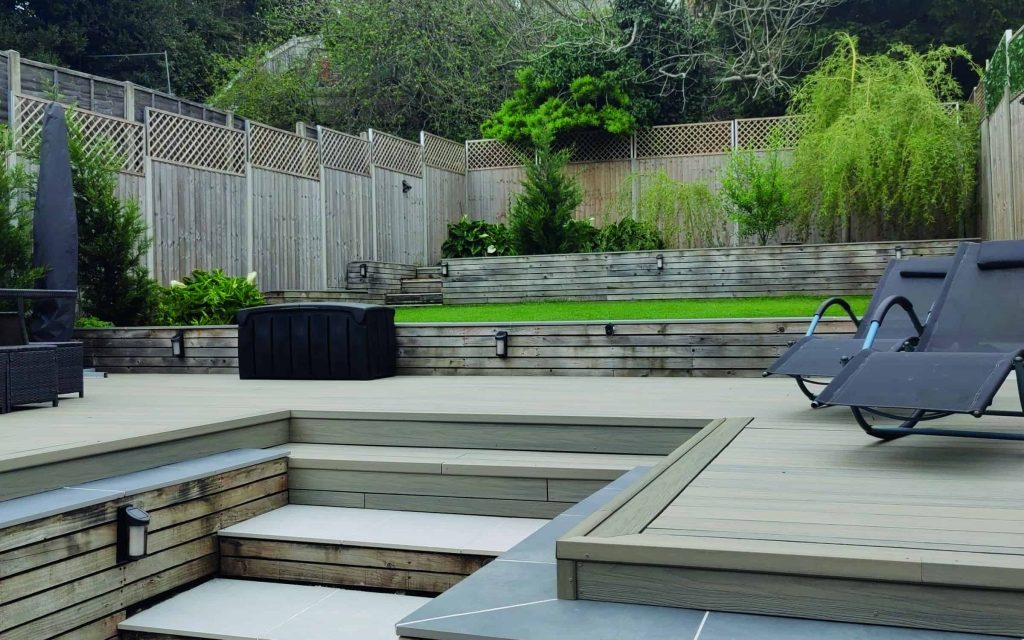
Risers, Fascia, and Trim: Attention to Details
Perfection in installing composite decking over concrete steps requires refined finishing touches on risers and fascia. Once treads are secure, measure riser heights to attach vertical riser boards between treads. Use glue and screws, maintaining level lines. Composite riser boards may differ in thickness or overhang patterns—choose slightly thinner trims to avoid foot contact.
Fascia trim completes side edges of your stair set. Apply construction adhesive to the frame edge, position the composite fascia board, and affix with finish screws. Align the fascia flush with tread overhangs for a cohesive aesthetic. Post fastener holes with touch-up material matching board color to maintain sleek finish.
For open risers or decorative voids, use diamond-drilled lattice or cross-batten designs to prevent debris buildup, especially in front-facing view. On double-level porches, installers can add low-voltage LED strip lights under each tread overhang to create nighttime safety—easy with composite boards as carriers.
Don’t neglect how to install composite decking on concrete stairs—the core principles of precise leveling, fastening, and moisture management apply to both straight-run and complex angled staircases. Composite boards are stable and forgiving, but imperfect substrate or fastener placement can yield wavy or noisy stairs.

Maintenance and Care: Keeping Steps Stunning
After installing composite decking over concrete steps, maintaining their beauty requires minimal effort. Unlike wood, composite doesn’t need painting or staining; a quarterly sweep and semi-annual cleaning maintain appearance and prolong board life.
Use a mixture of mild dish soap and warm water or composite-specific cleaners (avoid wood deck cleaners with tannins). Apply with a soft brush and rinse thoroughly. For resistant grime like algae or rubber tire marks, use a non-chlorine cleaner or oxygen-based bleach diluted 4:1. Avoid wire brushes or abrasive pads, as they may damage caps.
Monitor for trapped moisture under steps—if boards are installed too tightly or frame doesn’t allow airflow, mildew can grow. Periodically sweep debris under stair treads and ensure drainage remains effective.
Check and re-tighten fasteners after seasonal expansion and contraction cycles. Gaps may narrow in summer heat or widen in winter cold. Composite boards are designed to handle this, but speed and symmetry look best with proactive adjustment. Treat cuts or edges with sealant as needed—especially in salted-winter climates where moisture could penetrate.
Understanding how to put composite decking over concrete steps includes considering local weather. In snow-prone regions, use plastic snow-friendly shovels and avoid using rock salt which may discolor caps over time. Composite tolerates mild chemical use, but prolonged exposure to harsh salts or freeze/de-thaw cycles can dull finishes over many years—replaceable with color caps down the line.
Troubleshooting Common Issues
Despite following recommended steps, problems may arise when installing composite decking over concrete steps. Here’s how to address common challenges:
Warping or Bowing Boards: Usually a result of improper fastener spacing or insufficient clearance. Ensure fasteners are within manufacturer guidelines (12″-16″ c/c) and that board ends have 1/8″ spacing.
Gaps Between Boards: If expansion/contraction gaps weren’t allowed, boards may warp or bow. Remedy by loosening fasteners and re-spacing edges.
Mold or Mildew Growth: Often due to poor drainage. Use cleaner and brush, and prune nearby plants to increase airflow. In persistently damp areas, consider adding gutter above steps.
Fastener Pops: Weak or incorrect screws may loosen. Replace with correct corrosion-resistant composite screws and add bead of exterior-grade caulk to screw heads.
Uneven Boards on Steps: May stem from imprecise frame leveling. Use shims (composite or pressure-treated wood) to adjust before fastening each tread.
Having a maintenance plan prevents many issues. Learn how to install composite decking over concrete steps by anticipating potential pitfalls and building corrective strategies into your process.
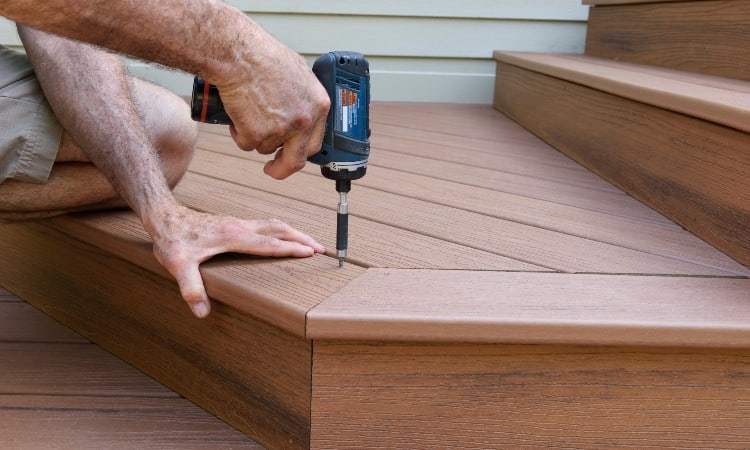
Final Tips and Best Practices
Now that you understand steps for installing composite decking over concrete steps, here are final guidelines for success:
Use fully capped, 4-sided composite boards for weatherproofing.
Always measure carefully and dry-fit boards before cutting.
Build a proper subframe with moisture gaps and sufficient rigidity—don’t attach boards directly to concrete.
Follow manufacturer spacing guidelines for expansion.
Choose the right fasteners and adhesives—designed for composite use.
Seal exposed cuts and edges when finished to maintain warranty.
Implement routine cleaning maintenance to prevent buildup.
Troubleshoot early—tighten screws, address flooding, or shift boards if issues emerge.
By following these best practices, installing composite decking over concrete steps becomes a DIY-ready project delivering high-end results with long-term payback.
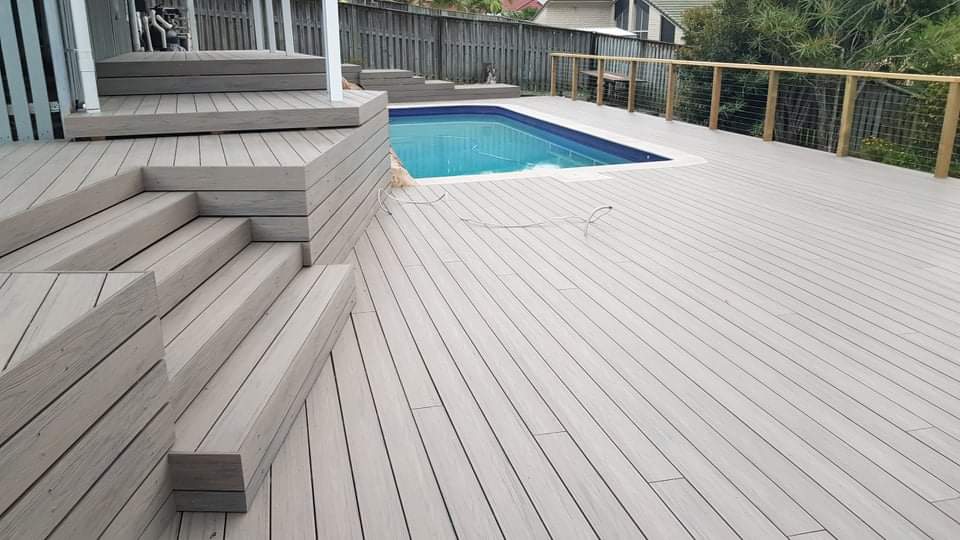
Conclusion
Whether you’re upgrading an old porch or creating a fresh entrance, installing composite decking over concrete steps transforms the stairway from utilitarian to striking. This step-by-step process—ranging from preparing the substrate and crafting subframes to fitting boards and caring for the finished installation—equips you to handle a professional-quality upgrade on your own. The result? A durable, attractive, slip-resistant stairway that enhances safety, ease, and aesthetic—no more dull concrete in sight.
Want to get composite decking with wholesale price? Welcome to contact Hosung WPC!

